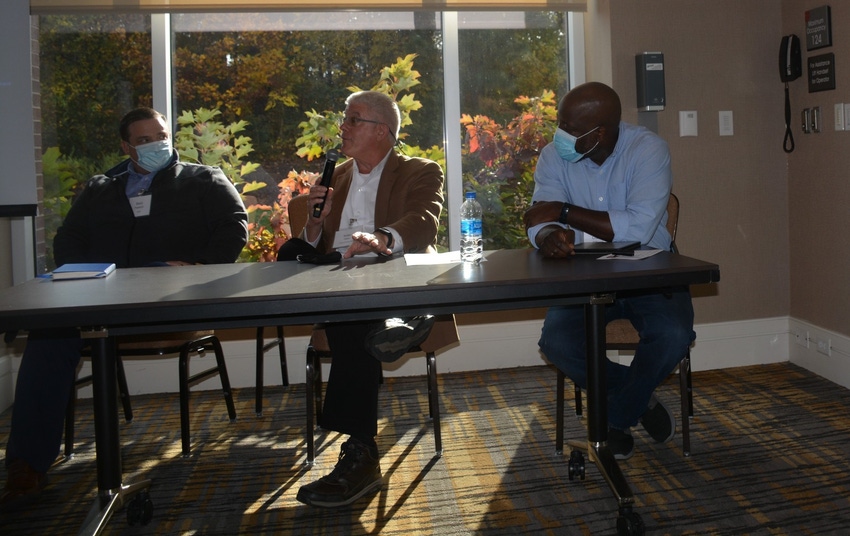
For new technology to work on the farm, it needs to be both easy to use and meet a real need.
Speaking on future-ready farms at the North Carolina State University College of Agriculture and Life Sciences Emerging Research Showcase on Nov. 11 in Raleigh, Kater Hake, vice-president of agriculture and environmental research at Cotton Incorporated, said it all boils down to putting an easy button on the new technology, whether it be sensors on the farm or data management tools.
In addition, Hake said it is important to work with grower/leaders who can be early adapters and then encourage other farmers to adapt the new technology on their farms. He said this approach works for the cotton industry where roughly 500 growers donate their time for innovation and leadership in the industry. Other growers look to them for guidance.
“We have to think of a way for growers to provide oversight because they are all self-selected to be independent. Nobody is going to stay in farming and risk that wealth and accumulated knowledge and time unless they want to be their own boss, so somehow we need to connect that desire to be their own boss with a system where they can utilize all that data coming in,” Hake said.
Cranos Williams, professor of electrical and computer engineering and director, EnBiSys Research Laboratory at North Carolina State University, emphasized the importance of identifying and integrating stakeholder value early in the process of technology development.
“Oftentimes, we look at this from more of developing a nice tool as opposed to a useful tool. So conditioning how people see these tools that are being engineered and developed over time is going to be extremely important,” Williams said.
And just as Hake emphasized, Williams said engineers need to make it easier for stakeholders to really understand the utility and potential value of emerging technologies. He said education is key to transferring the knowledge to where it can be used.
In the meantime, Ranveer Chandra, managing director, research for industry, networking research, CTO, Agri-Food for Microsoft, said expanding broadband on the farm is vital if the new technology is to be developed on the farm.
“We need to do more to bring broadband not just to the farmer’s house, but to the farm which is a different problem. That is something we need everybody to rally around. It’s not just a technical problem, it’s a policy problem. Everybody needs to rally together to make that happen because if that happens that’s like a foundation which would drive the adoption of more digital tools in agriculture,” Chandra said.
Finally, new technology, particularly robotics, will be vital to the future of animal agriculture as well. Brent Frederick, pork innovation lead at Cargill, emphasized that the human element will remain in the livestock sector, but the industry will become more automated.
“It starts at the farm and then gets down to the barn within the farm and then down to the pen and ultimately to the pig to be able to monitor that. I know things are being worked on in each one of those and as you get closer to the individual animal how much more difficult or costly it is,” Frederick said of the new technology.
Robotics can be used to automate activities that are tough to do, repetitive in motion and not that pleasant to accomplish. Frederick said vaccination of animals is one such task that could be done by robotics because it is so tedious. Another task that could be done by robots is power washing.
“Power washing is extremely important, but anyone who’s been on the other end of a power washer knows what that takes to get it done,” he said.
About the Author(s)
You May Also Like






